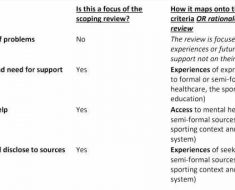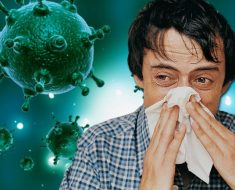The pathophysiology of the coronavirus disease 2019 (COVID-19) is associated with a wide range of functional changes in several physiological parameters.
The direct impact of the severe acute respiratory syndrome coronavirus 2 (SARS-CoV-2) on male and female urogenital organs has yet to be determined. Nevertheless, various explanations have been offered based on biological similarities between SARS-CoV and SARS-CoV-2.

Study: How has COVID-19 affected sex and fertility? Image Credit: Chinnapong / Shutterstock.com
In a recent Trends in Urology & Men’s Health study, the potential effects of SARS-CoV-2 on sexual activity and fertility are discussed.
Genital ACE2 receptors
SARS-CoV-2 primarily infects cells that have angiotensin-converting enzyme 2 (ACE2) receptors present on their surface. In addition to ACE2, the transmembrane serine protease 2 (TMPRSS-2) is also often required.
Except in the epididymis, ACE2 receptor expression is observed throughout the male genital tract, particularly within Sertoli cells and sperm stem cells. Previous studies have shown that biopsies taken from the testicles of infertile men express increased levels of ACE2 receptors in both germ and somatic cells.
ACE2 receptors are also expressed in the ovaries, endometrium, myometrium, and decidua, as well as in the vagina, according to two recent reviews. The first-trimester trophoblast, as well as the late gestation placenta, chorion, amnion, and umbilical cord, have higher levels of ACE2 expression.
ACE2 receptor expression has recently shown to be relatively minimal in tissue samples obtained from the female genital tract and breast cells in one study, with TMPRSS-2 expression also minimal or non-existent. Therefore, it is unlikely that infection with SAR-CoV-2 could occur in the female genital tract.
SARS-CoV-2 infection of the genital tract
Several viruses have been detected in sperm samples; however, because other viable routes of transmission cannot be completely ruled out, it is challenging to prove intercourse as a method of viral transmission. Moreover, previous studies have indicated that the presence of SARS-CoV-2 in the vagina is extremely rare, with only four positive results out of 98 women tested.
The impact of COVID-19 on sexual activity
The impact of the COVID-19 pandemic on sexual activity, particularly during the periods of lockdown, is complicated by several circumstances and may vary by country. For example, one study conducted in Turkey found increasing frequency but lower quality of sexual activity throughout the current pandemic.
Although various reports in the United Kingdom have claimed that the frequency and quality of intercourse increased during COVID-19 lockdowns, the majority of the available evidence supports the opposite. In fact, couples' sex lives have reportedly degraded throughout the world as a result of the pandemic. This is true for both quantitative elements like potency, duration, and frequency of intercourse and foreplay, as well as more subjective aspects like lubrication, enjoyment, and libido.
Although several publications have cautioned about the potential transmission of COVID-19 through intercourse, no evidence to date has confirmed this mode of transmission. Nevertheless, several characteristics of sexual activity increase the likelihood of viral transmission; however, because sperm maturation can take up to 72 days, it is possible that sperm could remain infectious after being cleared from other sites. This is a possibility, especially if antiviral antibodies are unable to pass the blood-testis barrier.
COVID-19 and fertility
The direct impact of SARS-CoV-2 on sperm remains uncertain. All standard World Health Organization (WHO) parameters for semen analysis were considerably compromised in one study, which included 84 men with COVID-19 who required hospitalization.
Herein, sperm samples were inspected every ten days for up to 60 days, with the infected men's seminal volume about half that of healthy males. Additionally, the rate of progressive motility was also reduced by about 50%, which was accompanied by poor morphology. Although the amount of sperm in each sample and their motility improved statistically over time, these improvements were not clinically significant by 60 days, despite having a significant p-value.
SARS-CoV-2 has been shown to damage sperm cells, particularly in cases of severe disease; however, the mechanism responsible for this damage remains unknown. One prospective investigation of infected men found a temporary decrease in the conception rate.
COVID-19, like any other serious disease, causes menstrual alterations, most notably a longer period and reduced volume.
To date, no alterations in sex hormones have been discovered in individuals infected with SARS-CoV-2.
Notably, the COVID-19 pandemic has been associated with the lowest reproductive rate since 1938. However, COVID-19 itself does not appear to influence the number of births, which is the main determinant of fertility.
- Christopher Woodhouse. (2022). How has COVID-19 affected sex and fertility? Trends in Urology & Men’s Health 13(3); 17-21. doi:10.1002/tre.855.
Posted in: Men's Health News | Medical Science News | Medical Research News | Women's Health News | Disease/Infection News
Tags: ACE2, Angiotensin, Angiotensin-Converting Enzyme 2, Antibodies, Blood, Conception, Coronavirus, Coronavirus Disease COVID-19, Endometrium, Enzyme, Epididymis, Fertility, Frequency, Libido, Morphology, Ovaries, Pandemic, Pathophysiology, Placenta, Receptor, Respiratory, SARS, SARS-CoV-2, Semen, Serine, Severe Acute Respiratory, Severe Acute Respiratory Syndrome, Sexual Health, Somatic Cells, Sperm, Stem Cells, Syndrome, Umbilical Cord, Urology, Vagina
.jpg)
Written by
Colin Lightfoot
Colin graduated from the University of Chester with a B.Sc. in Biomedical Science in 2020. Since completing his undergraduate degree, he worked for NHS England as an Associate Practitioner, responsible for testing inpatients for COVID-19 on admission.
Source: Read Full Article





